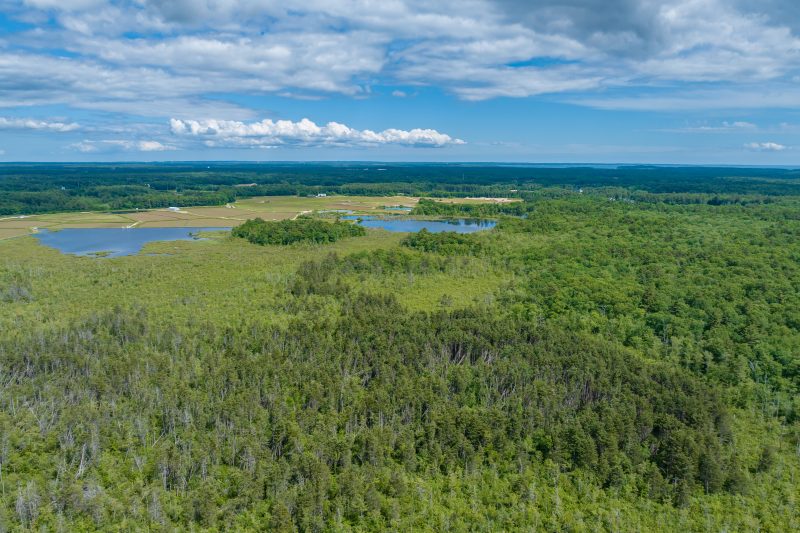The Buzzards Bay Coalition has acquired the 1,652-acre Slocum-Gibbs Cranberry Company property, which consists of land in the towns of Carver, Wareham, Rochester, and Middleboro, for permanent protection as open space. Vast forested uplands, cranberry bogs, and floodplain wetlands in two large contiguous components along the rivers will be protected, contributing to the growing corridor of conserved land here.
It will benefit water quality in the rivers, aquifers, and the Bay, and conserve critical habitat for fish and wildlife.
While retirement and ecological restoration is planned for 165 acres of the existing cranberry bogs, the Coalition plans to continue agricultural operations where feasible. The more than 35 acres of the highest-producing and environmentally friendly bogs will continue to be harvested, maintaining the heritage of farming on this land.
Like the recently restored Mattapoisett Bogs project, lands will be restored so that much is available to the public for enjoying its scenic beauty and passive recreational use.
The Coalition has worked to purchase this land from John “Gary” Garretson III, owner of Slocum-Gibbs Cranberry Company. Garretson is the third-generation operator of the farm that his grandfather started back in 1919. “Gary and his family had decided that conservation should be the next chapter for the Slocum-Gibbs Cranberry Company, and we worked together to bring that vision to reality,” says Mark Rasmussen, president of the Buzzards Bay Coalition. “They made this decision in the face of huge pressure to convert the land to residential development, or sand and gravel mining, or clearcutting for solar arrays.”
Garretson received the Buzzards Bay Guardian Award, the organization’s highest honor, at the Coalition’s annual meeting in May for conserving his property as his family’s legacy and working out this complicated purchase and sale with the non-profit.
The Coalition worked closely with a variety of partners to make this acquisition possible, including the Massachusetts Executive Office of Energy and Environmental Affairs, the Massachusetts Department of Conservation and Recreation, the United States Fish and Wildlife Service, Buzzards Bay National Estuary Program, the towns of Carver and Wareham, which each contributed community preservation funds to the deal, and private donors.
Project funding came from a variety of sources, such as $5,547,150 in state grants by way of the Landscape Partnership and Cranberry Bog Acquisition for Restoration programs; $2 million from US Fish and Wildlife Service to the Massachusetts Department of Conservation and Recreation; $150,000 from the Buzzards Bay National Estuary Program; and $375,000 each from Carver and Wareham’s community preservation funds. Private donations were also crucial to the purchase.
The land will be permanently protected by conservation restrictions held by partner organizations, including the Wareham and Carver Conservation Commissions, Rochester Land Trust, and the Massachusetts Department of Fish and Game.
“Gary Garretson’s legacy of conservation is a model, which others have already begun to follow,” says Brendan Annett, Vice President of Watershed Protection at the Coalition, noting that cranberry growers throughout the region are taking note of Garretson’s decision to choose land conservation. The Coalition has purchased many bogs in the watershed over the years for restoration and hopes that more local cranberry growers take advantage of the opportunity to partner with the Coalition when retiring bogs, instead of selling them and the surrounding land for development.
With the purchase complete, the Coalition will now begin a planning and assessment process for both the ecological restoration to take place on the retired bogs, as well as how the land can be made available for the public’s use and enjoyment.
An official opening in the spring of 2027 is expected.

Overhead of lands surrounding Sippican River in Rochester looking east.